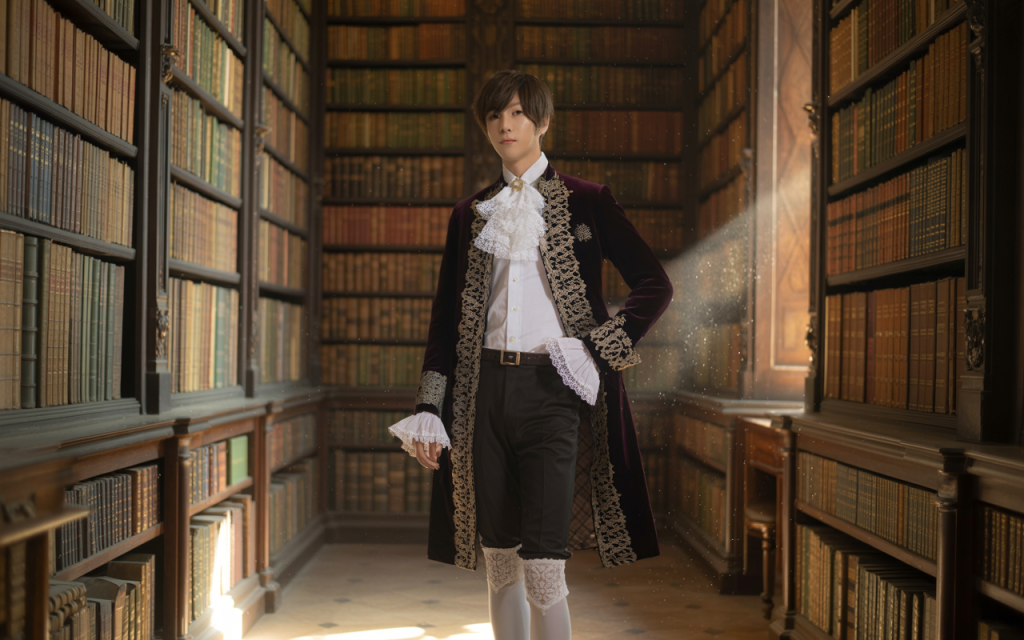In the heart of Japanese alternative fashion lies a regal and refined style known as Ouji fashion—a subculture that redefines how we think about masculine elegance. Far from being confined to gender norms or traditional menswear, Ouji fashion offers a world where lace, ruffles, and brocade unite to express identity, creativity, and confidence.
Whether you’re new to the scene or looking to evolve your wardrobe, this guide will help you understand the essence of Ouji style and how to make it your own.
Content
What Is Ouji Fashion, Really?

Derived from the Japanese word for “prince,” Ouji fashion (also called Boystyle) blends Victorian and Rococo influences with modern expression. While often seen as a counterpart to Lolita fashion, Ouji stands firmly as its own genre. Instead of petticoats and skirts, Ouji focuses on pants, often styled as bloomers or ouji shorts, paired with elegant blouses and tailored vests.
It’s romantic, aristocratic, and theatrical—designed to make you feel like royalty.
Who Can Wear Ouji Fashion?
Here’s the short answer: everyone.
Despite the masculine title, Ouji fashion isn’t just for males. In fact, Ouji fashion female representation is vast and celebrated. From cis women to non-binary fashion enthusiasts, the community thrives on inclusivity. The emphasis is on the look, not the body wearing it.
So whether you identify as a prince, princess, or something in between, this style belongs to you.
A Tour Through Ouji Fashion Substyles
One of the most exciting parts of the Ouji world is its variety. Depending on your mood or taste, you can switch between its diverse substyles:
- Classic Ouji – Muted tones and old-world tailoring; the quintessential European prince look.
- Sweet Ouji – A sugary twist, borrowing elements from Sweet Lolita: pastels, bows, and playful motifs.
- Gothic Ouji – Think dramatic silhouettes, dark colors, and cathedral-inspired accessories.
- Casual Ouji – Simplified outfits for daily wear that still nod to the royal aesthetic.
Each of these Ouji substyles allows for self-expression while maintaining that signature princely flair.
Key Pieces to Build Your Ouji Wardrobe
Starting an Ouji wardrobe doesn’t mean you need to buy a full runway-ready outfit on day one. Begin with a few staple items and build your collection from there:
- Ouji Shorts or Bloomers – Often high-waisted and decorative, these replace skirts in this style.
- Ruffled or Jaboted Blouses – Feminine yet androgynous, these are central to the look.
- Tailored Vests and Jackets – Bring in that aristocratic edge with brocade, velvet, or satin.
- Socks and Stockings – Over-the-knee socks or tights help balance the outfit.
- Footwear – Platform shoes, Victorian boots, or polished loafers complete the base.
- Accessories – Crowns, chokers, gloves, pocket watches—details are everything.
Layering and attention to texture are crucial. A well-coordinated outfit can speak volumes even without loud colors.
How Is Ouji Fashion Different from Ouji Lolita?
Although they often share the same circles and influences, Ouji fashion and Ouji Lolita aren’t identical.
- Ouji fashion centers around a pants-based silhouette, offering a regal, masculine-inspired presence.
- Ouji Lolita, meanwhile, blends masculine tailoring with feminine Lolita structures, sometimes even incorporating skirts or mixed garments.
In practice, many wearers enjoy blending the two depending on their mood or event. The overlap enriches the creative possibilities.
Where to Shop for Ouji Fashion
Finding authentic or inspired Ouji fashion can feel intimidating at first, but there are many reliable options to explore:
Japanese Brands
- Alice and the Pirates
- Atelier BOZ
- MIHO Matsuda
Secondhand and Budget-Friendly Sources
- Closet Child
- Wunderwelt
- Mercari Japan
Taobao & Indie Shops
- Search for shops with custom measurements and gender-inclusive cuts. Brands catering to Sweet Ouji often offer unique colors and themes.
Tip: Start small with versatile pieces and explore accessories before diving into full coords.
Your Journey Into Ouji Begins Here
At its heart, Ouji fashion is about more than clothes. It’s a way of expressing grace, confidence, and identity in a style that breaks free from binary limitations. Whether you’re drawn to the drama of Gothic Boystyle or the sugary charm of Sweet Ouji, you’re joining a movement of creativity and empowerment.
Put on your ouji shorts, tie your cravat, and step boldly into your fairytale.

Genevie Keaney is an experienced fashion blogger. She has been blogging for nearly 10 years, and her blog posts are often featured in major publications. Her blog posts cover everything from the latest trends to tips on how to wear certain pieces of clothing. Theresa’s favorite style icons include Audrey Hepburn and Michelle Obama, who she cites as having great style.












